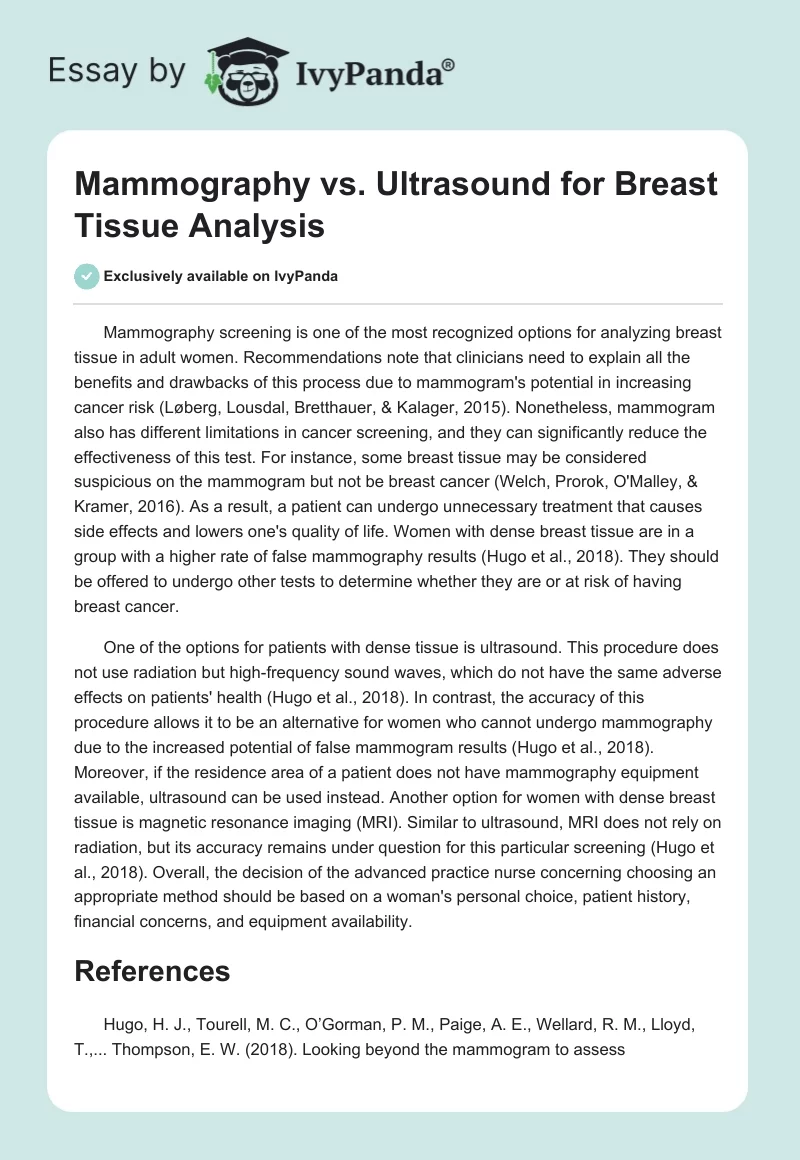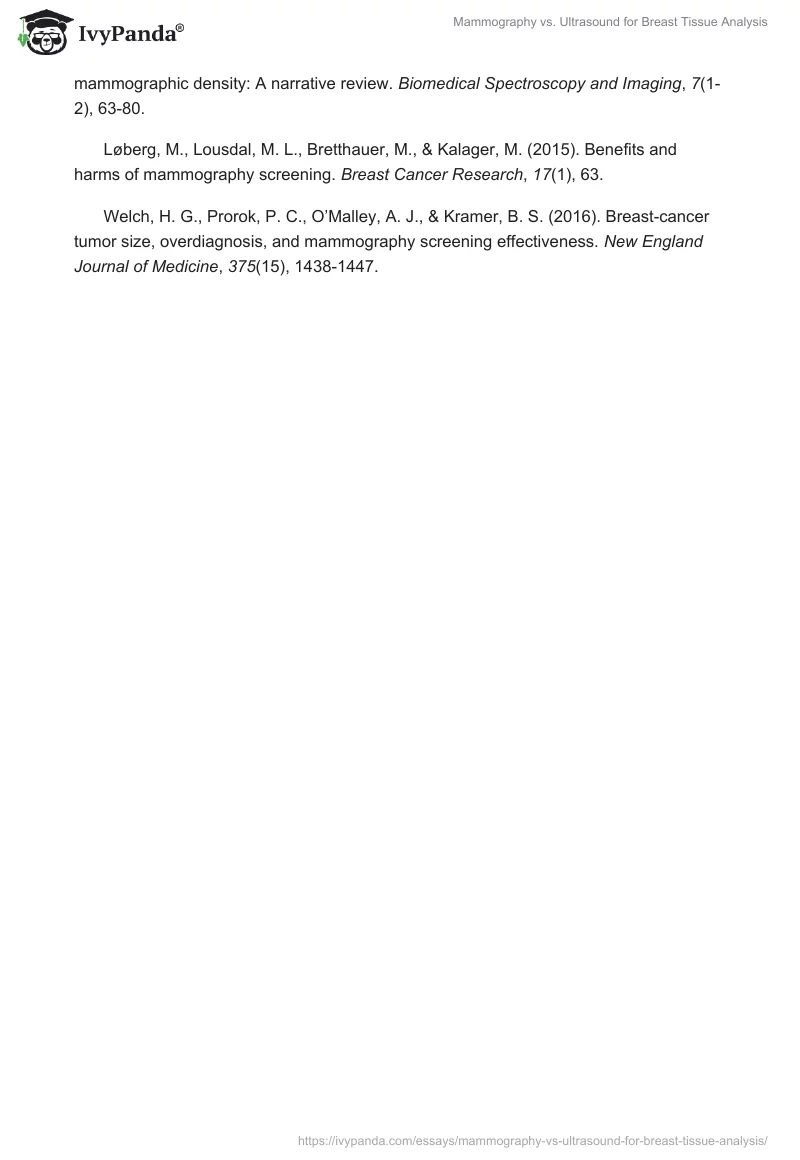Mammography screening is one of the most recognized options for analyzing breast tissue in adult women. Recommendations note that clinicians need to explain all the benefits and drawbacks of this process due to mammogram’s potential in increasing cancer risk (Løberg, Lousdal, Bretthauer, & Kalager, 2015). Nonetheless, mammogram also has different limitations in cancer screening, and they can significantly reduce the effectiveness of this test. For instance, some breast tissue may be considered suspicious on the mammogram but not be breast cancer (Welch, Prorok, O’Malley, & Kramer, 2016). As a result, a patient can undergo unnecessary treatment that causes side effects and lowers one’s quality of life. Women with dense breast tissue are in a group with a higher rate of false mammography results (Hugo et al., 2018). They should be offered to undergo other tests to determine whether they are or at risk of having breast cancer.
One of the options for patients with dense tissue is ultrasound. This procedure does not use radiation but high-frequency sound waves, which do not have the same adverse effects on patients’ health (Hugo et al., 2018). In contrast, the accuracy of this procedure allows it to be an alternative for women who cannot undergo mammography due to the increased potential of false mammogram results (Hugo et al., 2018). Moreover, if the residence area of a patient does not have mammography equipment available, ultrasound can be used instead. Another option for women with dense breast tissue is magnetic resonance imaging (MRI). Similar to ultrasound, MRI does not rely on radiation, but its accuracy remains under question for this particular screening (Hugo et al., 2018). Overall, the decision of the advanced practice nurse concerning choosing an appropriate method should be based on a woman’s personal choice, patient history, financial concerns, and equipment availability.
References
Hugo, H. J., Tourell, M. C., O’Gorman, P. M., Paige, A. E., Wellard, R. M., Lloyd, T.,… Thompson, E. W. (2018). Looking beyond the mammogram to assess mammographic density: A narrative review. Biomedical Spectroscopy and Imaging, 7(1-2), 63-80.
Løberg, M., Lousdal, M. L., Bretthauer, M., & Kalager, M. (2015). Benefits and harms of mammography screening. Breast Cancer Research, 17(1), 63.
Welch, H. G., Prorok, P. C., O’Malley, A. J., & Kramer, B. S. (2016). Breast-cancer tumor size, overdiagnosis, and mammography screening effectiveness. New England Journal of Medicine, 375(15), 1438-1447.


